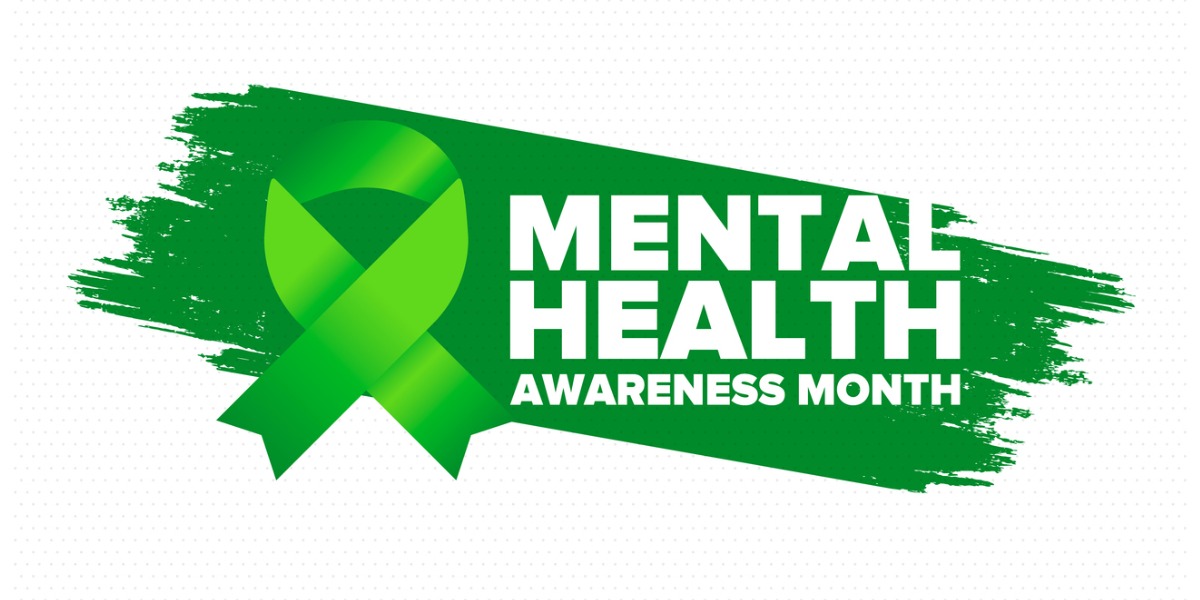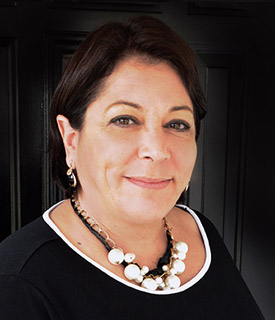Mental Health Awareness Month 2025 is a 30-day initiative to bring attention to the current state of mental health in the United States. Every year during May, organizers and advocates work together to host Mental Health Awareness Month.
Conceived and launched 76 years ago by the group Mental Health America, a wide range of public and private groups support Mental Health Awareness Month 2025, including the National Alliance on Mental Illness (NAMI), the Substance Abuse and Substance Abuse and Mental Health Service Administration (SAMHSA), and the National Institute on Mental Health (NIMH). Past participants include various federal agencies and non-profit entities, such as the Centers for Disease Control (CDC), the National Institutes of Health (NIH), the American Foundation for Suicide Prevention (ASFSP), and the American Psychological Association (APA).
In this article, we’ll focus on the efforts of the organizers at NAMI, who chose this theme for Mental Health Awareness Month 2025 (MHAM):
“In Every Story, There’s Strength”
The organizers at NAMI indicate this theme will:
“Celebrate the power of storytelling to highlight the resilience and diverse experiences that shape mental health journeys within our community.”
This theme aligns with the overall goals of MHAM, which include:
- Increasing knowledge about mental health
- Decrease stigma related to mental illness and support for mental health conditions
- Bring awareness to the lived experience of people facing mental health challenges
Specifically, the organizers at NAMI will use the story and strength theme to:
- Foster resilience and hope
- Increase connection and understanding
- Build community and
- Empower people with mental health challenges – and advocates – to take action to improve mental health for all
Before we share details on how you can participate in Mental Health Awareness Month 2025. We’ll review the latest statistics on mental health in the U.S.
Mental Health in 2025: The Latest Facts and Figures
The information that follows is available to the public via the 2023 National Survey on Drug Use and Health (2023 NSDUH), the most recent reliable national publication on rates of mental health and substance use disorders. Each year, The University of Michigan and the National Institutes of Health (NIH) survey over 70,000 adolescents and adults, which enables us to understand – on a population level – the current state of mental and behavioral health for people in the U.S.
We’ll start with the overall statistics on mental illness from the 2023 NSDUH.
Adults With Any Mental Illness (AMI) in 2023:
- By Age Group:
- Total, 18+: 22.8%
- Young Adults 18-25: 33.8%
- Adults 26-49: 29.2%
- Adults 50+: 14.1%
Those statistics show that over 58 million adults in the U.S. had a clinical mental illness in 2023. Next, we’ll look at prevalence of serious mental illness, which means a mental illness that causes significant disruption in daily life and typical daily function.
Adults With Serious Mental Illness (SMI) in 2023:
- By Age Group:
- Total 18+: 5.7%
- Young adults 18-25: 10.5%
- Adults 26-49: 7.9%
- Adults 50+: 2.4%
Those statistics show that over 14 million adults in the U.S. had a serious mental illness in 2023. People with serious mental illness may experience disruptions in academic attainment, relationships, and the ability to find and maintain employment.
Next, we’ll look at the prevalence of major depressive disorder (MDD), measured in the NSDUH by a proxy metric: the presence of a major depressive episode, one of the primary clinical criteria for diagnosis or MDD.
Major Depressive Episode (MDE): Adults
- Reported MDE 18+: 17.5%
- Young adults 18-25: %
- Adults 26-49: %
- Adults 50+: 4.5%
- Reported MDE with severe impairment 18+: 10.2%
- Young adults 18-25: %
- Adults 26-49: %
- Adults 50+: 2.7%
Those statistics show that over 45 million adults in the U.S. reported a MDE in 2023, with more than 26 million reporting severe impairment. People with MDE with severe impairment serious may experience significant disruptions in family, school, and work life.
We’ll finish this statistics section with the latest information on suicidality, which include thinking about suicide, making a plan to attempt suicide, and/or attempting suicide.
Suicidality in 2023: Adults 18+
- Reported serious thoughts of suicide in the past year:
- Total: 5%
- 18-25: 12.2%
- 26-49: 5.9%
- 50+: 2.1%
- Made a suicide plan in the past year:
- Total: 1.4%
- 18-25: 4.2%
- 26-49: 1.6%
- 50+: 0.5%
- Attempted suicide in the past year:
- Total: 0.6%
- 18-25: 2.0%
- 26-49: 0.6%
- 50+: 0.2%
Those statistics show that over 13 million adults seriously thought about suicide, over three (3) million made a plan to attempt suicide, and more than one and a half (1.5+) million attempted suicide in 2023.
When we consider the data above together, we know why we still need to recognize and participate in Mental Health Awareness Month: millions of people need specialized support for mental health disorders.
Now that we can all understand the importance of MHAM, let’s take a look at how anyone can join the advocacy movement for MHAM 2025.
Mental Health Awareness Month 2025: Share Your Story
As we mention in the introduction to this article, above, the theme for this year is In Every Story, There’s Strength.
To gather stories to share inspiration and awareness, NAMI offers three ways to share your mental health story. Anyone with experience related to mental health can share their experience. People with a mental health diagnosis are encouraged to share, but NAMI wants everyone to tell their story, including family, friends, loved ones, teachers, therapists – anyone with mental health story to tell can tell that story for MHAM 2025.
Mental Health Awareness Month 2025: Three Ways to Share
-
- Short vids:
- 30-90 seconds
- Vertical mode
- Look directly at camera
- Use good lighting: avoid shadows, warm light is best
- Longer vids:
- 3-5 minutes
- Landscape mode
- Use good lighting (see above)
- Short vids:
- Audio:
- 15-45 seconds
- Speak clearly
- Avoid background noise
- Include a photo of yourself if you like
- Writing:
-
- Social media: 1-2 sentence post
- Blog/article: 300-1,000 words
- Include a photo of yourself if you like
That’s how you join the advocacy movement for MHAM 2025. However, if you want to share but don’t know what to share, you can use the following prompts, supplied by NAMI, to help you get going:
- What do you want people to know about….
…mental health?
…depression?
…anxiety?
…bipolar disorder?
…schizophrenia?
- What kind of misinformation/ incorrect information about mental health do you see or hear at work, school, or in the community?
- What have your experiences with mental health taught you?
- How does your mental health affect your daily life?
- How do you support friends or family members with mental health challenges?
- What steps do you take to reduce stigma related to mental health?
- What three words best describe your mental health experiences?
- What inspires you to participate in MHAM?
- Why are you an advocate for mental health awareness and an ally for people experiencing mental health challenges?
You can use those prompts for video, audio, or written submissions. Once you decide what you want to do – and do it – you can upload them here:
NAMI: Submit Your Mental Health Awareness Month 2025 Video/Audio
NAMI: Submit Your Mental Health Awareness Moth 2025 Written Story
That’s not all you can do. You can also join the movement by amplifying the weekly themes for MHAM established by NAMI. We’ll share those now.
MHAM 2025: Weekly Themes for Social Media, Discussion, and Advocacy
NAMI designed a focused message for advocates and participants to share and discuss for each week during the month of May:
Week 1: Mental Health for Older Adults
Core message:
As we age, we may experience life changes that affect our mental health.
This message reminds us that our minds and emotions are not fixed objects: they change over time, and so can out mental health.
Week 2: Children’s Mental Health
Core message:
Supportive families, communities, and resources create the foundation for lifelong well-being and positive mental health.
This message reminds us that unconditional love and support from people in our primary relationships are the most powerful protective factors for preventing, treating, and recovering from mental illness.
Week 3: Hope for People With Serious Mental Illness
Core message:
Support, understanding, and access to professional care can help with serious mental illness initiate recovery and live full and fulfilling lives.
This message reminds us that unconditional love and support from people in our primary relationships are the most powerful protective factors for preventing, treating, and recovering from mental illness.
Week 4: The Connection Between Mental and Physical Health
Core message:
Mental and physical health are connected: integrated care for co-occurring conditions supports lifelong wellness.
This message reminds us that the mind and body – and therefore the body and our thoughts/emotions – are part of a whole. They’re part of you, and it’s impossible – and counterproductive – to work on healing one without also considering healing the other.
Week 5: The Power of Community
Core message:
Supportive relationships and connected communities foster a sense of belonging and promote mental well-being for all.
This message reminds us that isolation and loneliness can contribute to the development of mental health disorders and exacerbate existing mental health disorders. After family support, which includes the support of friends/peers, reducing feeling of isolation and loneliness through real human connection is one of the most powerful protective factors against developing mental illness, and one of the most important factors in the mental health healing journey.
Finding Help: Resources
If you or someone you know needs professional treatment and support for a mental health disorder, please contact us here at Crownview Psychiatric Institute. We can help.
In addition, you can find support through the following online resources:
- The National Alliance on Mental Illness (NAMI): Find a Professional
- The National Institute of Mental Health (NIMH): Finding Treatment
- The Substance Abuse and Mental Health Services Administration (SAMHSA): Finding Help
- American Psychiatric Association (APA): Treatment Locator
- SAMHSA: Early Serious Mental Illness Treatment Locator


 Gianna Melendez
Gianna Melendez Jodie Dahl, CpHT
Jodie Dahl, CpHT